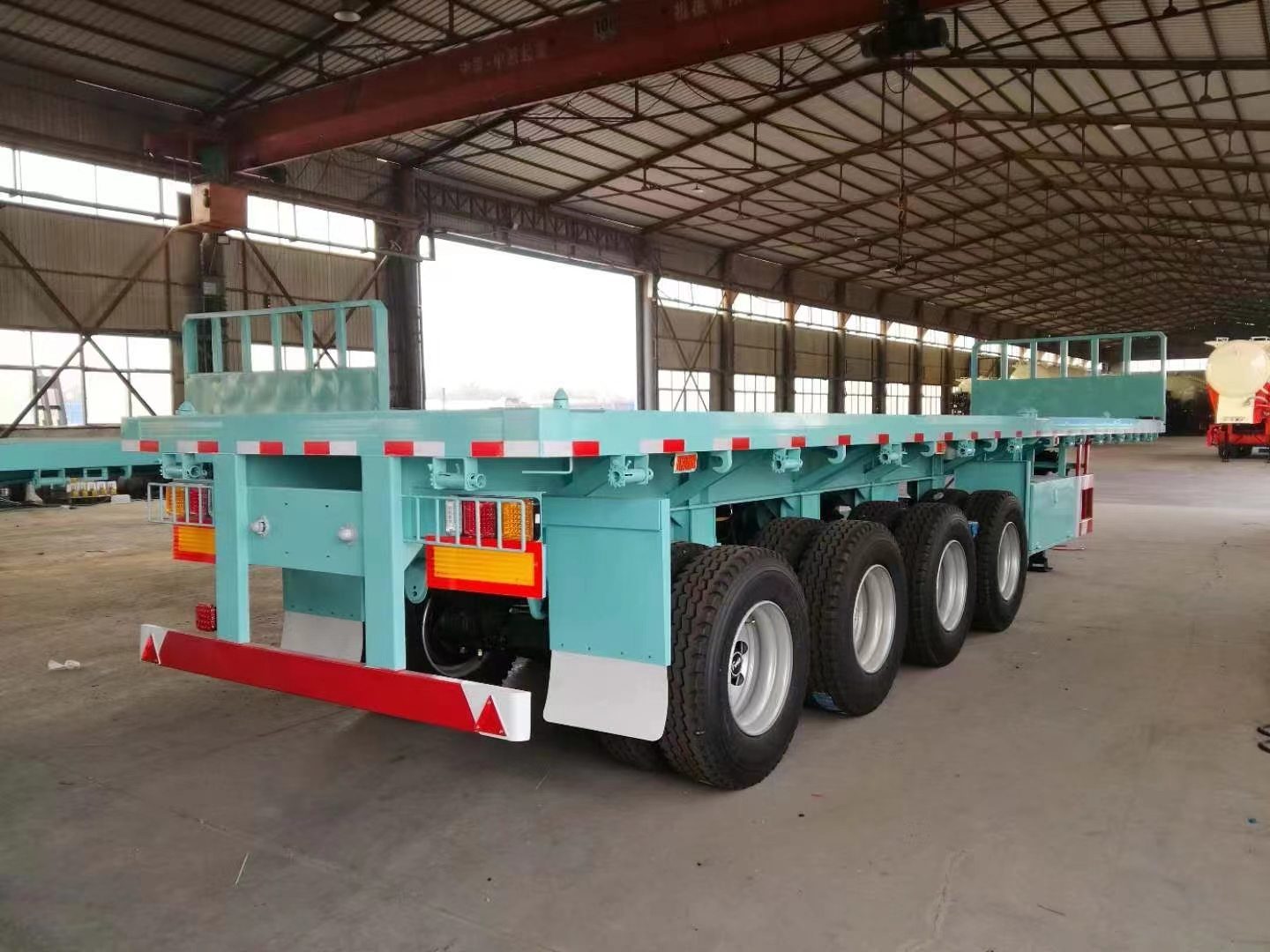Navigating Regulations: Operating 40ft 4 Axles Flatbed Semi Trailers with BPW 13T Axle on Public Roads
2024-02-28
In the complex landscape of transportation and logistics, regulatory compliance plays a crucial role in ensuring safety, efficiency, and adherence to legal standards. When it comes to operating 40ft 4 axles flatbed semi trailers equipped with BPW 13T axles on public roads, there are specific regulations and weight limits that operators must navigate. In this blog post, we'll delve into the regulatory framework surrounding these trailers and highlight the considerations for compliance.
Understanding Regulatory Framework
1. Federal Regulations: In many countries, including the United States, federal regulations govern the operation of commercial vehicles on public roads. These regulations may include guidelines for vehicle dimensions, weight limits, axle configurations, and safety standards.
2. State and Local Regulations: In addition to federal regulations, state and local governments may impose their own rules and restrictions on commercial vehicle operations. These regulations may vary from state to state and may include specific weight limits, route restrictions, and permit requirements.
Weight Limits and Axle Configurations
1. Gross Vehicle Weight (GVW): The GVW limit specifies the maximum allowable weight for a fully loaded vehicle, including cargo, fuel, and equipment. Operators of 40ft 4 axles flatbed semi trailers must ensure compliance with GVW limits to avoid fines and penalties.
2. Axle Weight Limits: Axle weight limits dictate the maximum weight that can be placed on individual axles or axle groups. The BPW 13T axles are designed to accommodate heavy loads, but operators must ensure that axle weights do not exceed legal limits to prevent damage to roads and infrastructure.
Compliance Considerations
1. Permit Requirements: In some jurisdictions, operators may need special permits to transport oversized or overweight loads using 40ft 4 axles flatbed semi trailers. These permits may be subject to specific conditions, including route restrictions, time limits, and additional fees.
2. Load Distribution: Proper load distribution is essential for maintaining vehicle stability and compliance with weight limits. Operators should evenly distribute cargo across the trailer deck and ensure that axle weights are within legal limits.
3. Route Planning: Operators must plan routes carefully to avoid roads with weight restrictions, low bridges, or other obstacles that may pose compliance challenges. Utilizing GPS systems and route planning software can help identify suitable routes and avoid regulatory pitfalls.
4. Routine Inspections: Regular inspections of the trailer, including brakes, tires, lights, and suspension components, are essential for ensuring compliance with safety standards. Any defects or deficiencies should be promptly addressed to prevent violations and ensure safe operation on public roads.
Conclusion
Operating 40ft 4 axles flatbed semi trailers with BPW 13T axles on public roads requires careful attention to regulatory requirements and weight limits. By understanding the regulatory framework, complying with weight limits and axle configurations, and adhering to permit requirements, operators can ensure legal compliance and safe operation of these trailers. Effective route planning, routine inspections, and proper load distribution are essential for navigating regulatory challenges and maintaining compliance with federal, state, and local regulations. With diligence and adherence to regulatory standards, operators can transport cargo safely and efficiently while mitigating the risk of fines, penalties, and safety hazards on public roads.



